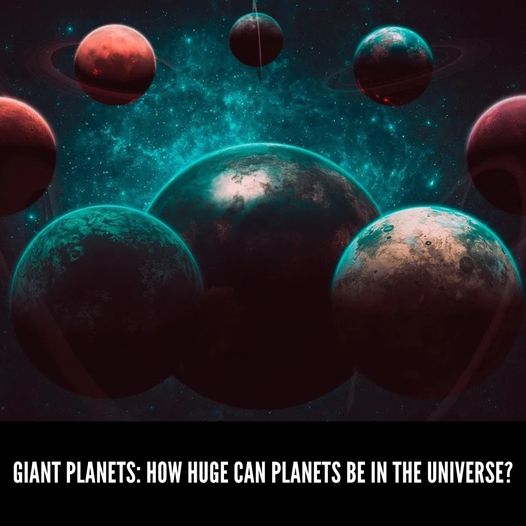
How big can the planets be in the Universe? Is there a limit to how large a planet can grow, or are there some colossal worlds out there that dwarf even our own Sun?
To answer this question, we need to understand what a planet is and how it forms. A planet is a celestial body that orbits a star and has enough mass to be spherical and clear its neighborhood of other objects.
Planets form from the leftover material of a star’s birth, called the protoplanetary disk. This disk is made of gas and dust that clump together under gravity and eventually become large enough to be considered planets.
However, not all planets are the same. There are two main types of planets: rocky and gaseous. Rocky planets are mostly made of solid materials, such as iron, silicon, carbon, and oxygen.
They tend to be smaller and denser than gaseous planets, which are mostly made of hydrogen and helium. Gaseous planets are also known as gas giants or Jovian planets, after Jupiter, the largest planet in our Solar System.

The size of a planet depends on several factors, such as its mass, density, composition, temperature, and distance from its star. Mass is the amount of matter in an object, while density is the ratio of mass to volume.
Composition is the type and proportion of elements that make up a planet. Temperature is the measure of how hot or cold a planet is, which affects how much it expands or contracts. Distance from the star determines how much heat and radiation a planet receives, which also influences its size.
Generally speaking, rocky planets have a smaller range of sizes than gaseous planets. The largest rocky planets, called super-Earths, are about twice as wide as Earth. For example, Kepler-10c is a super-Earth that has a radius of about 2.3 times that of Earth and a mass of about 17 times that of Earth .
However, rocky planets cannot grow much larger than that, because they would start to accumulate gas, ice, and water that would gradually transform them into gaseous planets with a rocky core .
Gaseous planets have a much wider range of sizes than rocky planets. The smallest gaseous planets, called mini-Neptunes or sub-Neptunes, are about four times as wide as Earth. For example, Kepler-138d is a mini-Neptune that has a radius of about 4.1 times that of Earth and a mass of about 1.5 times that of Earth .

The largest gaseous planets, called super-Jupiters or ultra-Jupiters, are about twice as wide as Jupiter. For example, HAT-P-67 b is a super-Jupiter that has a radius of about 2 times that of Jupiter and a mass of only about 0.34 times that of Jupiter .
However, gaseous planets also have a limit to how big they can get. As they grow in mass, they also become denser and more compact, which reduces their size. The most massive planets are around 13 times the mass of Jupiter . Beyond that point, they would become brown dwarfs, which are failed stars that are too small to ignite nuclear fusion in their cores.
So, what is the biggest planet in the Universe? Based on current observations and theoretical models, the biggest planet in terms of width is likely to be around twice as wide as Jupiter , while the biggest planet in terms of mass is likely to be around 13 times as massive as Jupiter . However, these numbers are not definitive, as new discoveries may reveal even bigger or heavier planets in the future.
